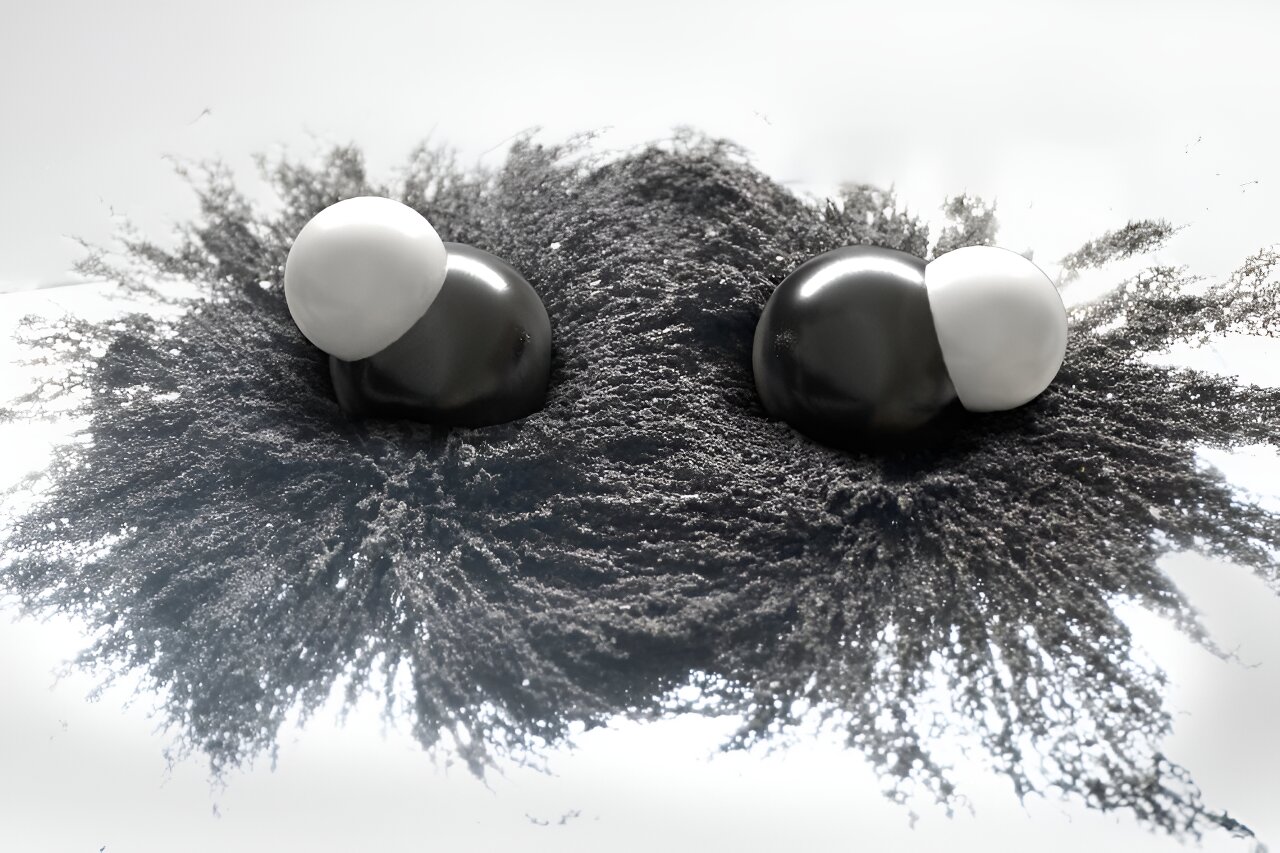博文
第一个在纳开尔文温度下实现的四原子超分子
||
第一个在纳开尔文温度下实现的四原子超分子
诸平
据德国马普学会(Max Planck Society)2024年1月31日提供的消息,由马普量子光学研究所(Max Planck Institute of Quantum Optics简称MPQ)的实验人员和中国科学院(Chinese Academy of Sciences简称CAS)等机构的理论学家组成的团队首次成功地填充并稳定了一种新型分子,即所谓的场链四原子分子(field-linked tetratomic molecules)。这些“超级分子”非常脆弱,它们只能存在于超冷的温度下(First tetratomic supermolecules realized at nanokelvin temperatures)。长期以来,人们一直怀疑它们的存在,但直到现在才得到实验证明。
在这项新研究中创造的多原子分子由两个以上的原子组成,并且已经成功地冷却到134 nK(134 nanokelvin),比以前创造的四原子分子的温度低3000多倍。这一成果不仅是分子物理学的一项新成就,而且是外来超冷物质研究的重要一步。这项研究于2024年1月31日已经在《自然》(Nature)杂志网站发表——Xing-Yan Chen, Shrestha Biswas, Sebastian Eppelt, Andreas Schindewolf, Fulin Deng, Tao Shi, Su Yi, Timon A. Hilker, Immanuel Bloch, Xin-Yu Luo. Ultracold field-linked tetratomic molecules. Nature (2024). DOI: 10.1038/s41586-023-06986-6. Published: 31 January 2024. https://www.nature.com/articles/s41586-023-06986-6
参与此项研究的有来自德国马普量子光学研究所(Max-Planck-Institut für Quantenoptik, Garching, Germany)、德国慕尼黑量子科技中心(Munich Center for Quantum Science and Technology, Munich, Germany)、德国路德维希-马克西米利安-慕尼黑大学(Ludwig-Maximilians-Universität München, Germany);中国武汉大学(Wuhan University, Wuhan, China)、中国科学院理论物理研究所(Institute of Theoretical Physics, Chinese Academy of Sciences, Beijing, China)、中国科学院大学(University of Chinese Academy of Sciences, Beijing, China)以及中国北京航空航天大学(Beihang University, Beijing, China)的研究人员。
大约20年前,美国理论物理学家约翰·伯恩(John Bohn)和他的同事预测了极性分子之间的一种新型结合:如果分子携带不对称分布的电荷,物理学家称之为极性,它们可以在电场中结合,形成弱束缚的“超级分子”。这些极性分子的行为可以被认为是坚硬外壳内的罗盘针。当它们靠在一起时,罗盘针会受到比地球磁场更强的吸引力,它们会指向彼此,而不是对准北方。
在极性分子中也可以观察到类似的现象,在特定条件下,极性分子可以通过电作用力形成独特的束缚态。它们的关系让人想起一对跳舞的情侣紧紧地抱在一起,同时又保持着一定的距离。超分子的束缚状态比典型的化学键要弱得多,但同时也要长得多。超级分子的键长是普通分子键长的几百倍。
由于这种长程性质,这种超分子是高度敏感的:如果电场的参数在一个临界值上只改变一点点,分子之间的力就会发生巨大的变化,这种现象被称为“场连接共振”("field-linked resonance")。这使得研究人员能够在微波场中灵活地改变分子的形状和大小。
一出三折戏:从双原子分子到四原子分子(A play in three parts: From diatomic to tetratomic molecules)
超冷多原子分子含有丰富的内部结构,为冷化学(cold chemistry)、精密测量和量子信息处理(quantum information processing)提供了令人兴奋的新可能性。然而,与双原子分子相比,它们的高复杂性对传统冷却技术(如直接激光冷却和蒸发冷却)的应用提出了重大挑战。
由罗新宇博士(Dr. Xin-Yu Luo音译)、泰蒙·希尔克博士(Dr. Timon Hilker)和伊曼努尔· 布洛赫教授(Prof. Immanuel Bloch)领导的MPQ“钠钾(NaK)实验室”("NaK Lab")的研究人员,近年来取得了一系列开创性的发现,并在《自然》杂志上发表,这些发现对最终克服这一挑战至关重要。
首先,在2021年,该实验室的研究人员发明了一种利用高功率旋转微波场(high-power rotating microwave field)对极性分子进行冷却的新技术(novel cooling technique for polar molecules),从而创造了新的低温记录:在零下273.15℃的温度下,比绝对零度高210亿分之一度。
一年后,研究人员首次在散射实验中成功地创造了必要的条件来观察这些分子之间的结合特征。这提供了第一个间接证据(first indirect evidence),证明这些理论上早就被预测的奇异结构的存在。
现在,甚至有直接的证据表明,研究人员已经能够在他们的实验中创造并稳定这些超级分子。这些“超分子”的成像揭示了它们的p波对称性(p-wave symmetry),这是一种独特的特征,对拓扑量子材料的实现至关重要,而这反过来又与容错量子计算(fault-tolerant quantum computation)相关。
上述论文的第一作者、博士生陈星燕(Xing-Yan Chen音译)说:“这项研究将产生直接而深远的影响。由于该方法适用于广泛的分子种类,因此可以探索更多种类的超冷多原子分子。在未来,它可以创造出更大、更长寿的分子,这对于精密计量学(precision metrology)或量子化学(quantum chemistry)来说尤其有趣。”
该实验的首席研究者罗新宇博士补充说:“我们得到这些发现也要感谢我们与中国科学院石弢教授(Prof. Tao Shi)及其团队的密切合作。我们的下一个目标是进一步冷却这些玻色子‘超分子’(bosonic 'supermolecules'),形成玻色-爱因斯坦凝聚体(Bose-Einstein condensate简称BEC),在那里分子集体移动。这一前景对我们对量子物理学的基本理解具有重要的潜力。更令人惊奇的是,通过简单地调整微波场,BEC的“超分子”可以转化为费米子分子(fermionic molecules)的新型量子流体,保持特殊的p波对称性。”
本研究得到了德国马普学会(Max Planck Society)、德国研究基金会(Deutsche Forschungsgemeinschaft under Germany’s Excellence Strategy—EXC-2111—390814868 and under grant no. FOR 2247)、中国国家重点研究与发展计划(National Key Research and Development Program of China grant no. 2021YFA0718304)、中国国家自然科学基金会(National Natural Science Foundation of China grant nos. 11974363 and 12274331)以及中国科学院青年基础研究项目(CAS Project for Young Scientists in Basic Research grant no. YSBR-057)的资助。
上述介绍,仅供参考。欲了解更多信息,敬请注意浏览原文或者相关报道。
Ultracold polyatomic molecules offer opportunities1 in cold chemistry2,3, precision measurements4 and quantum information processing5,6, because of their rich internal structure. However, their increased complexity compared with diatomic molecules presents a challenge in using conventional cooling techniques. Here we demonstrate an approach to create weakly bound ultracold polyatomic molecules by electroassociation7 (F.D. et al., manuscript in preparation) in a degenerate Fermi gas of microwave-dressed polar molecules through a field-linked resonance8,9,10,11. Starting from ground-state NaK molecules, we create around 1.1×103 weakly bound tetratomic (NaK)2 molecules, with a phase space density of 0.040(3) at a temperature of 134(3) nK, more than 3000 times colder than previously realized tetratomic molecules12. We observe a maximum tetramer lifetime of 8(2) ms in free space without a notable change in the presence of an optical dipole trap, indicating that these tetramers are collisionally stable. Moreover, we directly image the dissociated tetramers through microwave-field modulation to probe the anisotropy of their wavefunction in momentum space. Our result demonstrates a universal tool for assembling weakly bound ultracold polyatomic molecules from smaller polar molecules, which is a crucial step towards Bose–Einstein condensation of polyatomic molecules and towards a new crossover from a dipolar Bardeen–Cooper–Schrieffer superfluid13,14,15 to a Bose–Einstein condensation of tetramers. Moreover, the long-lived field-linked state provides an ideal starting point for deterministic optical transfer to deeply bound tetramer states16,17,18.
https://blog.sciencenet.cn/blog-212210-1420341.html
上一篇:血压变异性是心脏病发作和中风风险的主要预测指标
下一篇:科学家发现了一个惊人的技巧,可以扩大肉毒杆菌毒素的可能性
